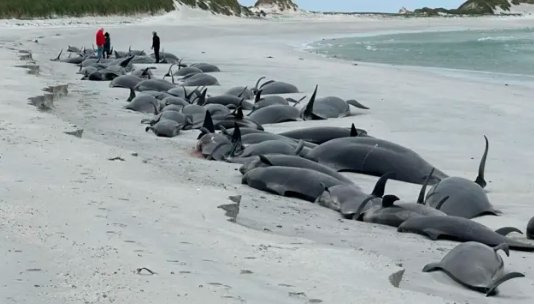Scotland has seen a sharp rise in marine mammal strandings along its coasts over the past three decades, according to a new study from the University of Glasgow. Researchers analyzed data from 1992 to 2022 and found increases across all cetacean species, with some showing alarming exponential growth that raises urgent conservation concerns.
Key Findings from the Study
The study used records from the Scottish Marine Animal Stranding Scheme to track 5,147 cetacean strandings. This marks the first time experts have quantified the trend for all species in Scottish waters.
Harbour porpoises made up the largest share, but common dolphins and baleen whales showed the steepest rises. Strandings for these two groups stayed low until around 2010, then jumped sharply.
Experts point to possible factors like climate change, ocean noise, and fishing gear entanglements. The data also highlights a higher number of juvenile animals affected, which could harm future populations.

Breakdown of Stranded Species
The research grouped cetaceans into categories to spot patterns. Harbour porpoises led with 2,676 cases, or 52 percent of the total.
Pelagic dolphins followed at 1,217 strandings, making up 24 percent. Common dolphins had 494 cases, baleen whales 479, and deep divers 281.
Here is a quick table showing the distribution:
| Species Group | Number of Strandings | Percentage |
|---|---|---|
| Harbour Porpoises | 2,676 | 52% |
| Pelagic Dolphins | 1,217 | 24% |
| Common Dolphins | 494 | 10% |
| Baleen Whales | 479 | 9% |
| Deep Divers | 281 | 5% |
This breakdown shows how some species face bigger risks than others.
Why the Increase Matters
The exponential rise in strandings for common dolphins and baleen whales suggests deeper issues in the marine environment. Scientists warn this could signal broader ecosystem stress.
Young animals appear more vulnerable, with data showing a spike in juvenile strandings. This trend might weaken breeding populations over time.
Recent events, like mass strandings in Europe this summer, add to the worry. Warmer waters and human activities could play a role, pushing animals into danger.
Conservation groups now call for better monitoring and protection zones. Prioritizing these species could help reverse the damage.
Possible Causes Behind the Trend
Experts link the increase to several factors. Climate change alters ocean currents and food sources, forcing animals to move into risky areas.
Noise from ships and offshore projects disrupts navigation, leading to more beachings. Bycatch in fishing nets also contributes to deaths.
Recent studies show similar patterns in nearby regions, like rising strandings along UK and Irish coasts over the last century. This points to long term shifts.
Pollutants, including new chemicals found in whale blubber, add another layer of threat. Marine heatwaves stress seafloor life, which affects the whole food chain.
Conservation Steps Moving Forward
Scotland already protects 37 percent of its seas, with plans to add more highly protected areas by 2026. This study urges focus on vulnerable species like common dolphins and baleen whales.
International efforts, such as the High Seas Treaty aiming for 30 percent ocean protection by 2030, offer hope. Local actions include better stranding response teams and public reporting.
Here are some key steps experts recommend:
- Boost funding for research on stranding causes.
- Expand marine protected areas to cover migration routes.
- Reduce ocean noise through stricter regulations on industry.
- Educate communities on reporting strandings quickly.
These measures could help safeguard Scotland’s marine life.
Global Context and Related Events
Similar issues appear worldwide. In recent years, whale strandings have risen along US coasts, often tied to wind farm surveys, though links remain debated.
In Australia, over 3,000 marine mammals stranded in just three years, sparking calls for offshore project reviews. Scotland’s data fits this global pattern of increasing threats.
Bubble net feeding by humpbacks and new shark discoveries highlight ocean wonders, but also the need for protection. Road pollution and forever chemicals show how land based actions harm seas.
The study serves as a wake up call. By acting now, we can address these trends and protect cetaceans for future generations.
Share your thoughts on this rising issue in the comments below, and spread the word to raise awareness about marine conservation.


















